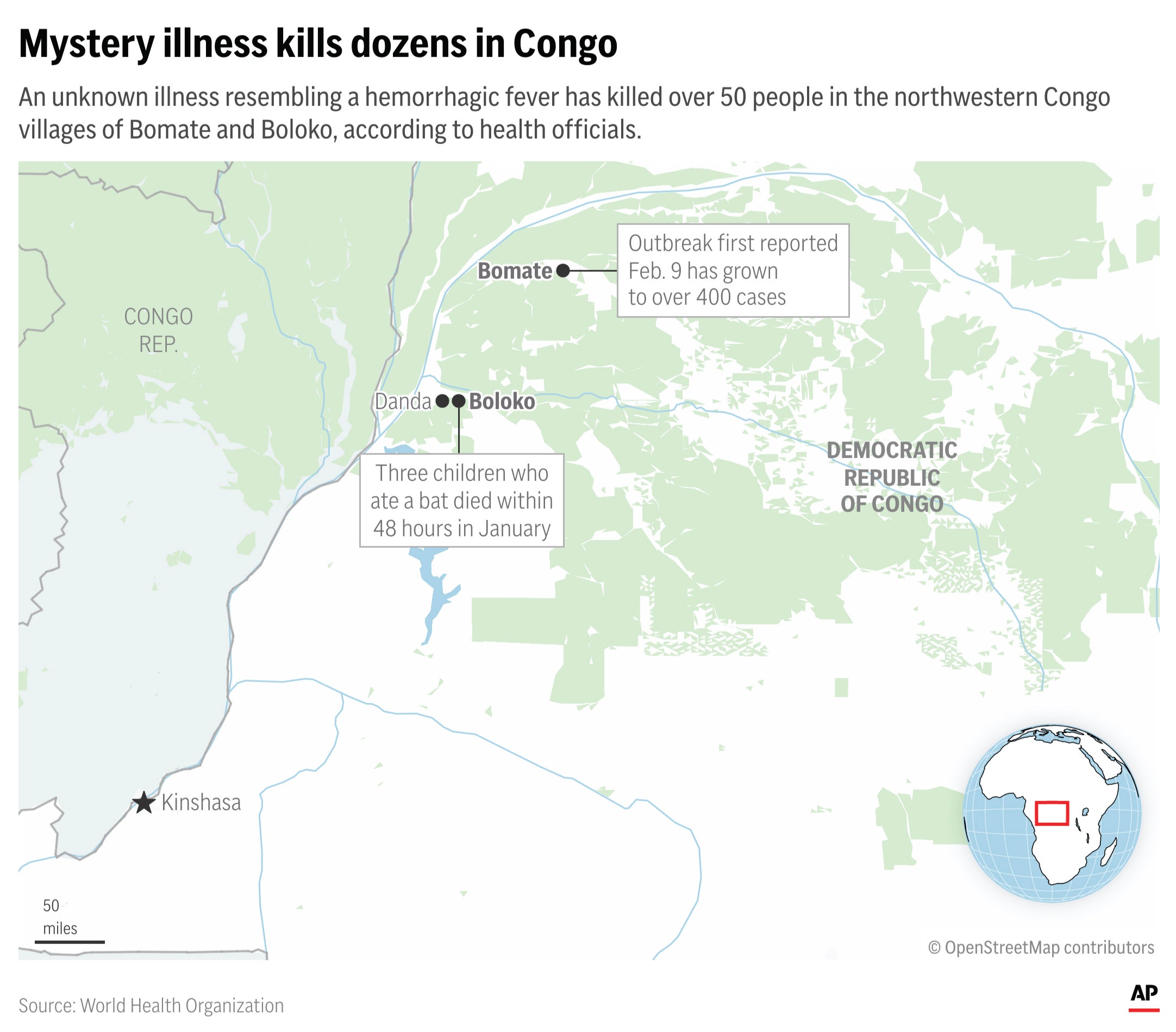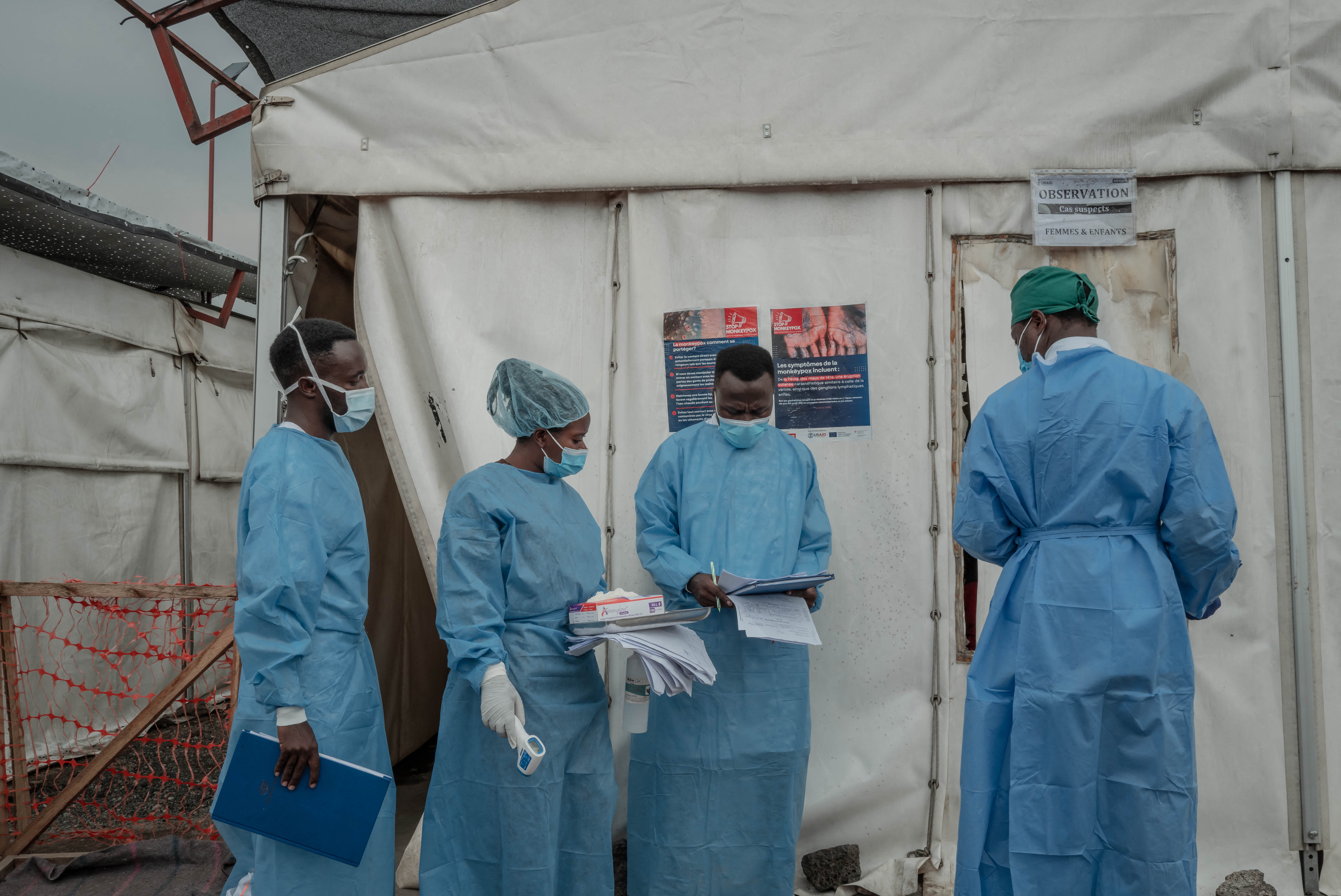
An unknown illness has killed more than 50 people within hours of the onset of their symptoms in northwestern Congo over the past five weeks, according to the World Health Organization.
Some 419 cases have been recorded including 53 deaths since the disease was first discovered in three children who ate a bat in the Democratic Republic of Congo on January 21.
Doctors on the ground say the interval between the onset of symptoms – which include fever, vomiting and internal bleeding – and death has been 48 hours in most cases.
“That’s what’s really worrying,” said Serge Ngalebato, medical director of Bikoro Hospital, a regional monitoring center.
These “hemorrhagic fever” symptoms are commonly linked to known deadly viruses, such as Ebola, dengue, Marburg and yellow fever, but researchers have ruled these out based on tests of more than a dozen samples collected so far.
The outbreak began in the town of Boloko after three children ate a bat and died within 48 hours following hemorrhagic fever symptoms, the Africa office of the World Health Organization said Monday.

There have long been concerns about diseases jumping from animals to humans in places where wild animals are popularly eaten.
The number of such outbreaks in Africa has surged by more than 60 percent in the last decade, the WHO said in 2022.
After the second outbreak of the current mystery disease began in the village of Bomate on February 9, samples from 13 cases were sent to the National Institute for Biomedical Research in Congo's capital, Kinshasa, for testing, the WHO said.
All samples were negative for common hemorrhagic fever diseases, although some tested positive for malaria.
Last year, another mystery flu-like illness that killed dozens of people in another part of Congo was determined to be likely malaria.

Earlier this month, the WHO warned the recent surge in violence in the eastern part of Congo had led to the destruction of critical health infrastructure. It said an “already dire situation” had been exacerbated for millions of people.
WHO has remained on the ground since then providing medical supplies, supporting health workers, and coordinating the emergency response.
The Congo is currently among the most affected countries in the Mpox epidemic. It recorded 79,519 suspected cases of Mpox and 1,507 deaths across its 26 provinces between the first week of 2024 and the sixth week of 2025, according to official data.
Just this week, the Ministry of Public Health, Hygiene and Social Welfare launched a Mpox vaccination campaign that aims to target more than 660,000 people.







